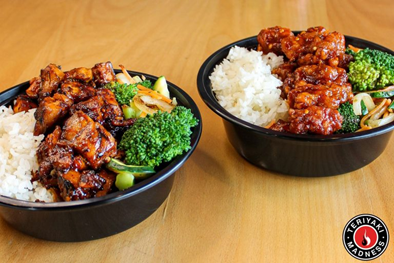TMAD Named The Future of Restaurant Franchising
The pandemic was a force for change for many industries, but perhaps none more so than the franchise restaurant industry. Quick-service, fast-casual and full-service restaurant franchises have all had to learn how to adapt as customers spend more time at home. But now, over two years since the onset of the pandemic, restaurant franchises are predominantly focused on growing technology platforms and accommodating returning in-person diners.
The prevailing demand from consumers is convenience at all levels, whether online or in-person. Peter Ricciardi, Chief Launch Officer at startup consultancy Ten9Eight7, LLC, and Jodi Boyce, CMO at teriyaki restaurant concept Teriyaki Madness*, both told 1851 Franchise that the trends they’re seeing in the industry suggest that convenience will continue to be the driving force behind the industry’s evolution.
“The consumer is much more demanding than they ever were previously,” said Ricciardi. “They want what they want, when they want — and they want to be able to have it any way they want it, which means they want to be able to take out, they want third-party deliveries, curbside delivery, drive-thrus and indoor and outdoor seating. And a franchisor needs to be prepared to meet these changing expectations of their consumers.”
Boyce echoed Ricciardi’s sentiment and noted that Teriyaki Madness has continued to look for ways to enhance convenience for customers to get and order food. For example, the brand is looking into voice-activated ordering, drone delivery and a partnership with Flyby which will track people on their way to the shop so that the kitchen knows exactly when to make the food.
Apart from all the Jetsons-like technology, Teriyaki Madness Boyce emphasizes that Teriyaki Madness remains a neighborhood teriyaki shop that is involved in its various communities.
“We won’t get rid of eat-in our dining group,” said Boyce “What we’re doing is trying to fill the need for each type of order. Some people want contactless and some people want to come sit and dine in our restaurants and talk to someone. So, we’ll have both, but it’ll probably remain about 80% takeout, delivery or pickup and 20% dine-in.”
Boyce points out that a key part of adding any new technology is making sure that it integrates with the brand’s other systems. To keep the technology as streamlined as possible, she adds that Teriyaki Madness always checks to make sure that a new system will be able to integrate with the other partners the brand uses to avoid confusion for consumers.
Before the pandemic, Teriyaki Madness already had an app and an online ordering system established which launched in 2018. Because of these integral technological pieces, the brand was already a step ahead once COVID-19 entered the scene in 2020.
“We just had to crank up the volume and let people know what was there,” said Boyce. “We also had to initiate curbside ordering. We didn’t need it before the pandemic, but we realized it was something that would help our customers.”
With the influx of technology available to the franchise food industry, Ricciardi notes that brands are now more than ever capable of meeting consumer demands but that franchisors must also cast their thoughts to employees’ needs in the future.
“The crisis that all franchisors are facing, and will face in the future, is employees and whether or not they have enough employees and can meet their expectations,” said Ricciardi. “Employees now feel like they have a say in whether they work, so having a positive, attractive work environment that is made easier by streamlined technological components only adds to maintaining a motivated workforce.”
Ricciardi mentions that everyone working within the franchise food industry has to be prepared to be more efficient, as consumers and employees demand it.
“Franchisees have to understand whether or not a franchisor is prepared to be efficient,” said Ricciardi. “If the franchisor is not, they’re in the weeds because yesterday’s franchise will not be applicable today in QSR; it’s not the same business.”
With that sentiment, Boyce and her team at Teriyaki Madness have continued to forge ahead, planning for years of technology and convenience developments.
“I’m trying to stay five steps ahead,” said Boyce. “Before the pandemic, we were probably three years ahead of other brands. Because of the pandemic, a lot of brands have caught up quickly, so now we’re looking at what we can do to get ahead.”




